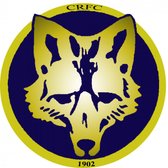
4. 1946-1960
At the end of the war planning had gone ahead to obtain a fixture list for the remainder of the season, from January to the end of April. The first match was against Westleigh on January 12th, 1946. Coalville won the game, played on the Broom Leys School ground, three points to nil. In March, an Old Boys XV turns out to play a couple of matches, Albert Sanderson, who had been a prisoner of war in Germany for almost five years, plays in the first match against the Vipers that ends in a draw, 18 points each. Eleven games are played by the club before the end of April.
In April, 1946, it is announced that the intention of Coalville RFC is to purchase a ground and to erect a pavilion, the objective being to have the playing field as a War Memorial. A.G. Ball is reported as saying that the club lost six or seven members in the first war and eight during the second war. In September, it is announced that the Memorial Fund stands at £1022, a phenomenal sum given that it was raised in 1946 in only six months. About that time Coalville RFC purchase the future Memorial Ground from the Whitwick Colliery Co for £250. The next season the ground is levelled, regraded and sown. A wooden building is located, purchased, transported to Coalville and erected on the Memorial Ground. By January 1948, Coalville RFC had a ground and a clubhouse of their own.
The first full season after the Second World War, 1946-1947, is captained by Geoff Choyce who carries on where he left off in 1939. The season opens with two teams being fielded, with both teams winning, the 1st XV have an excellent win over Earlsdon, eighteen points to three. The following week is the first game on the Memorial Ground after the groundwork for improvement had taken place. The 1st XV lose to Westleigh, nine points to four.
This first period after the Second World War saw most of the veterans who had played before the war, and those who had seen service finish playing. Newcomers, most just as gifted and enthusiastic about the game, come into the reckoning. However, when reviewing the playing record over those fifteen seasons what percolates through is a judgement concerning where Coalville’s place was in the close knit rugby fraternity of junior rugby. Yes, Coalville would always have a team which would give one hundred percent on the field and could never be faulted for effort and zeal, and occasionally it could produce a season or two with a team that would beat the best junior clubs in the Midland counties. However, the difficulty had come by way of the club’s ability to stay at the very highest junior level over a sustained period. This had been shown to be difficult challenge for the club and one that would return on several occasions over the next forty years

